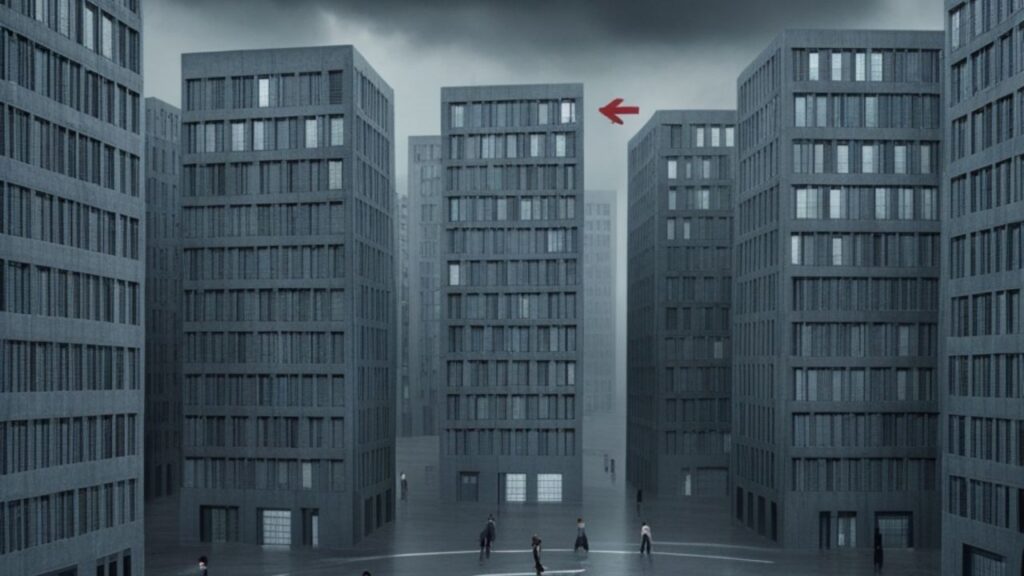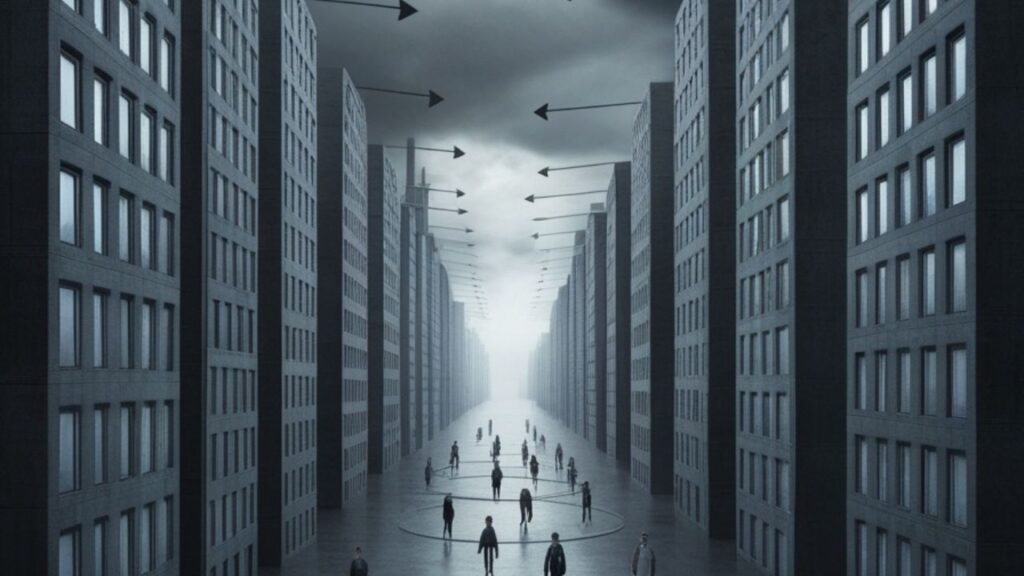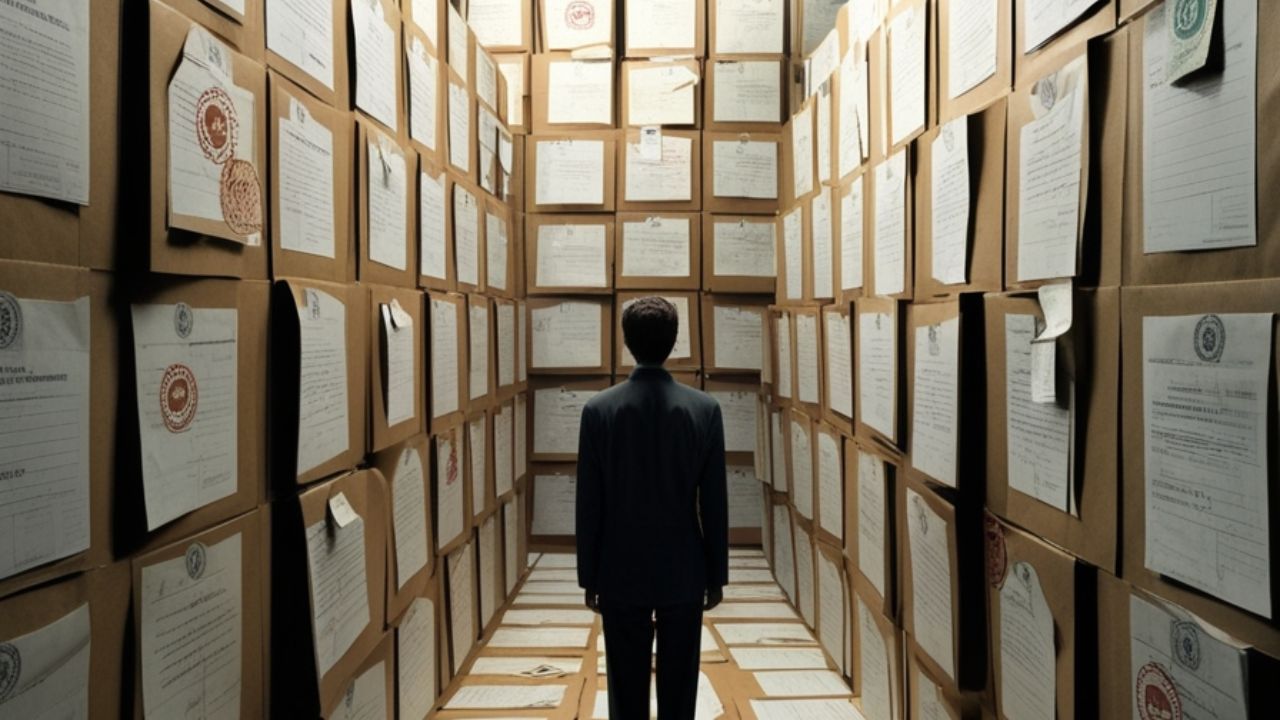Kafkaesque describes a world that feels strange and unfair. People face confusing rules, endless waiting, and no clear answers. It shows how systems can trap someone in a maze of forms and commands that never seem to make sense.
In real life, a Kafkaesque moment happens when machines or offices act without care. A person may try to fix a small mistake, but every call or email leads to another delay. It feels like being stuck inside a dream that never ends.
Writers, artists, and film creators use Kafkaesque ideas to show life’s strange side. They remind us that people can lose control when power or rules grow too big. Understanding this helps you stay calm when life feels confusing.
The Root of Kafkaesque: Origins & Evolution
Who Was Franz Kafka?
Franz Kafka was a writer from Prague who lived in the early 1900s. He wrote stories that showed fear, loneliness, and strange worlds. His books made people think about how hard it is to live under strict rules and unfair systems.
Many people still read Franz Kafka today because his stories feel real even now. His writing helps readers understand how life can be confusing. He wanted to show that kindness and courage can help people face strange or unfair situations.
How Kafkaesque Entered the Lexicon
What Kafkaesque Means: Formal Definitions
The Building Blocks of Kafkaesque Situations

Here’s a deeper dive into the traits that define Kafkaesque:
Labyrinthine Bureaucracy
- It has many rules that confuse people instead of helping them.
- Every step needs forms, stamps, or long waiting lines.
- Workers follow orders without clear reason or feeling.
- People lose time and hope while trying to finish small tasks.
- The system grows larger but forgets the needs of real humans.
See also : All Is Well or All Is Good: What’s Grammatically Right?
Powerlessness & Alienation
- People feel small and unheard when systems ignore their voices.
- Decisions happen far away, leaving no chance to explain or appeal.
- Loneliness grows because others face the same silence.
- Rules replace kindness, making life feel cold and empty.
- Hope fades when effort brings no change or understanding.
Illogical Rules or Outcomes
- Rules change suddenly without reason or warning.
- Actions that should help often make problems worse.
- People follow every step but still fail in the end.
- Officials give answers that do not match the situation.
- Nothing connects cause and effect, leaving everyone confused.
Surreal or Nightmarish Reality
- Ordinary places feel strange, like dreams that twist reality.
- Time and logic stop making sense for those inside the story.
- Simple tasks turn scary or impossible without reason.
- Familiar people act in odd, unpredictable ways.
- The world feels both real and unreal, creating deep fear and confusion.
No Resolution or Escape
- Every effort to fix the problem leads back to the start.
- People search for answers but never find clear solutions.
- The system keeps moving, even when nothing changes.
- Hope slowly fades as confusion grows stronger.
- The struggle ends without closure, leaving only silence and despair.
Kafkaesque in Kafka’s Own Works
The Trial
The Trial tells the story of a man named Josef K. who is blamed for something he never did. He tries to find out the reason, but no one explains. Every visit to the court brings more fear, silence, and confusion.
In The Trial, the main character meets many people who give no real help. The offices are full of papers, noise, and strange faces. The story shows how unfair systems can make a person feel small and lost.
The Metamorphosis
The Metamorphosis is a story about a man named Gregor who wakes up one day as a giant insect. He feels scared but still thinks about his job and family. His strange change makes his home cold and full of sadness.
In The Metamorphosis, Gregor’s family slowly stops caring for him. They hide him away and treat him like a burden. The story shows how fear and shame can break love when people do not understand what someone is going through.
The Castle
The Castle tells about a man named K. who goes to a strange village to work. He tries to reach the castle, but no one gives him a clear way. Every helper and office makes his path longer and harder to understand.
In The Castle, people around K. follow strange rules that change all the time. They act busy but never help. The story shows how large systems can make people feel tired and lost while chasing answers that never come.
Kafkaesque in Real Life: Modern Examples
Bureaucratic Gridlock
- Work slows down because too many offices handle the same task.
- Paperwork piles up, and no one knows who must decide.
- Rules clash, causing long waits and wasted time.
- People move from one desk to another without results.
- Progress stops completely while problems keep growing.
See also : It Is Must vs It Is a Must: Grammar Rule Explained
Workplace & Algorithmic Maze
- Computer systems decide who gets jobs or rewards without human review.
- Employees follow digital rules that change suddenly and without notice.
- Automated tools judge work speed but ignore real effort or skill.
- Workers feel lost inside endless data checks and reports.
- Technology controls choices, leaving people with no clear way forward.
Social Media’s Kafkaesque Court
Social Media’s Kafkaesque Court shows how online platforms can feel like unfair judges. People may lose posts or accounts without knowing why. Messages vanish, and rules change suddenly. It becomes hard to find help or understand what really happened behind the screen.
In Social Media’s Kafkaesque Court, users follow systems that seem to decide everything. Likes, bans, and reports appear without reason. This digital world shows how technology can control voices, leaving people confused and unsure about their place online.
Kafkaesque in Pop Culture & Media
- Movies like Brazil show dark, confusing worlds ruled by red tape.
- TV shows such as Severance and Black Mirror explore strange control systems.
- Writers like Haruki Murakami use surreal events to show human struggle.
- Many stories mix fear, humor, and mystery to mirror real life.
- The theme stays popular because it reflects how people feel in modern society.
Misuse & Overuse: When Kafkaesque Fails
- People sometimes use the word for small troubles like slow service.
- It loses meaning when applied to normal daily stress.
- True cases involve deep fear, confusion, and loss of control.
- Overuse weakens its power to describe real suffering.
- The term should show serious struggles, not simple frustration.
Why Kafkaesque Matters in 2025

- Modern life has complex systems that confuse and overwhelm people.
- Digital platforms often act without reason, echoing Kafka’s dark ideas.
- It reminds leaders to design fair and clear rules for everyone.
- The term helps people understand feelings of fear and helplessness.
- Learning from it builds empathy and balance in a fast, automated world.
It’s a Lens on Systems
When policy grows complex and opaque, Kafkaesque warns of human cost. Lawmakers’ constant reforms backfire – leading to inefficiency
It’s a Psychological Insight
It highlights how complexity can crush identity, hope, and dignity.
It Impacts Design Thinking
If tech or services ignore this, people pay emotionally and financially.
Case Study: Italian Bureaucracy Gone Kafkaesque
- Italy’s public offices faced too many laws that changed too quickly.
- Workers struggled to follow new rules, causing long delays and confusion.
- Paperwork grew faster than real progress in solving problems.
- People felt powerless as decisions moved through endless offices.
- The study showed that unclear systems can destroy trust and efficiency.
Signs You’re in a Kafkaesque Moment
- You keep sending papers or forms that always get lost.
- Every person you ask gives a different answer.
- The process feels endless, with no final result.
- No one takes responsibility or explains what is happening.
- You feel trapped in confusion, unable to find real help.
Conclusion:
Final Thoughts remind readers that life can sometimes feel like a puzzle made of strange rules. When people face confusion, they can learn patience and strength. Clear thinking and kindness help them stay calm, even when the world feels unfair or too hard.
In Final Thoughts, the lesson is simple: systems may grow too big, but people can choose to stay human. Understanding feelings, listening to others, and helping when possible keep life balanced. Hope and reason always light the path through difficult times.
FAQs
What does it mean when something is Kafkaesque?
It describes a nightmarish, oppressive situation marked by confusion, absurdity, and helpless bureaucracy.
What was Kafka’s philosophy?
Kafka explored alienation, existential dread, and the struggle of individuals against incomprehensible systems.
What is the difference between Orwellian and Kafkaesque?
“Orwellian” focuses on political oppression; “Kafkaesque” highlights surreal, illogical struggles within bureaucracy.
What does “Kafkaesque” mean in Breaking Bad?
It refers to Walt’s feeling of powerlessness and confusion within unjust, bureaucratic systems.

Join Bibcia on a journey to master English grammar. Discover easy lessons, writing tips, and practical examples designed to make learning grammar simple and effective.










